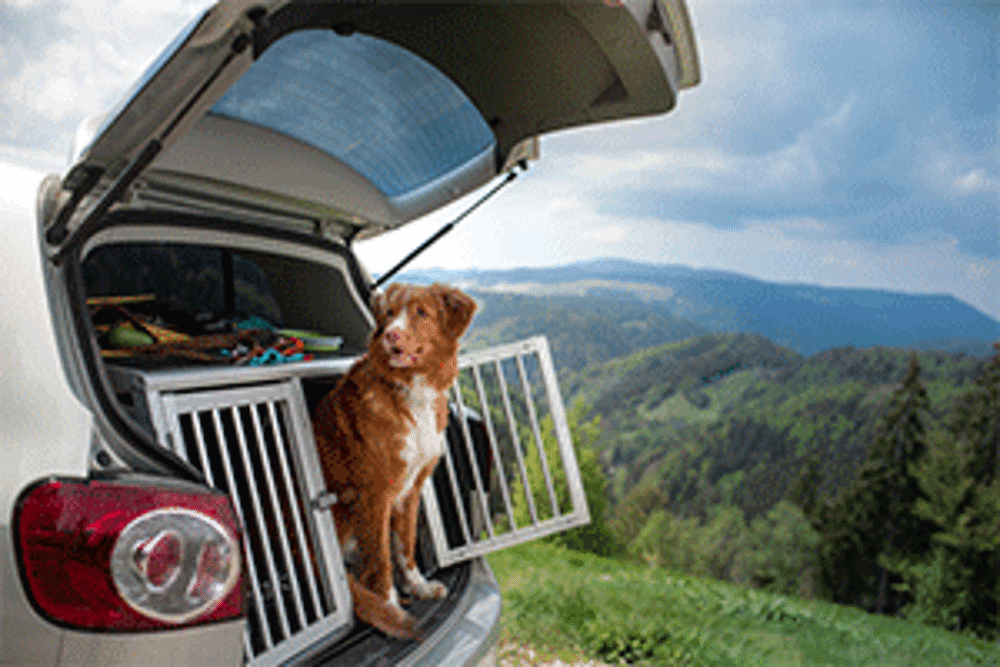
With the summer holidays here, you may be planning to get away for a break with your four-legged best friend and with the rise in popularity of dog friendly pubs, cafes, and service areas, it’s becoming much easier to include your dog in your holiday plans. But keeping your dog safe while on the move can take a little extra planning.
Remember to buckle up
Human passengers know about the importance of wearing a seatbelt while travelling in a car, and the same is true for your dog. The Highway Code clearly advises that dogs travelling in your car must be “suitably restrained so they cannot distract you while you are driving or injure you, or themselves, if you stop quickly.”
The best way to do this is by using a harness that plugs into a seatbelt port, a suitable travel crate (whether tethered on the back seat or fitted to the boot of the car), or a dog guard between the boot and the last passenger row.
Your dog must never travel in the front passenger seat as this may be a distraction to you, the driver, and could very seriously injure your dog in the event of the airbags being activated.
Make your dog as comfortable as possible
If you’re packing up the car for a big trip, it’s important to make sure that your dog has plenty of room to stand, turn around, and lie down in. A favourite blanket can help make them feel calm and reassured, as can some toys from home. Let them sleep by keeping the car environment calm and quiet, and make sure you make frequent stops.
Take frequent rest stops
Taking frequent rest stops is especially important if your dog is not used to travelling for long distances. When you do stop, make sure you let your dog have a short walk and take a toilet break if needed. This is also a good opportunity to let them have a drink if you don’t have a travel water bowl for them during the journey.
Be aware of travel sickness
Just like humans, dogs can suffer from the effects of travel sickness - especially if they are not used to long car journeys. However there are a few things you can do to help ease the symptoms:
- Limit food intake for around two hours before starting your journey. Your dog is less likely to be sick if there is no food in their stomach
- Keep a good flow of cool air in the car, whether this is from the air conditioning or from a rolled down window
- Limit your dog moving about in the car as much as possible, as this can add to the effects of the motion sickness
- Ginger biscuits can help alleviate nausea symptoms, but feed sparingly as while they can help in this instance, they’re not very healthy for your dog
- In extreme cases of travel sickness, you should consult with your vet about whether there is medication that may be suitable for your dog to take before journeys
Regardless of travel sickness, it’s always a good idea to travel with a roll of kitchen paper, some pet friendly cleaning wipes, and a couple of spare towels - just in case of any accidents.
